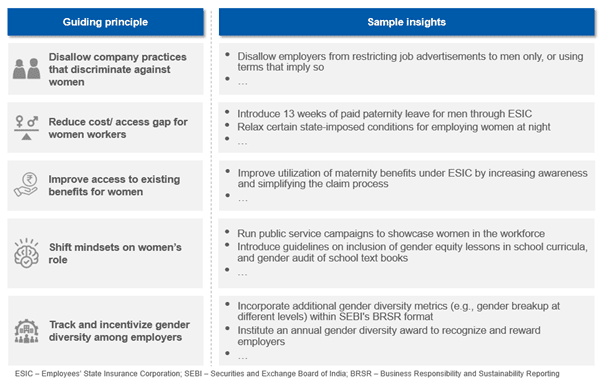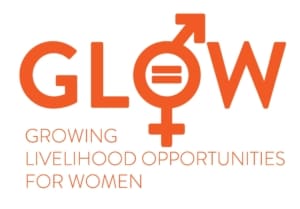Insights to Improve Women’s Workforce Participation

The Indian government prioritizes women through various policies and schemes (e.g., gender budgeting[1], Paalna Scheme for children of working mothers[2]). To strengthen these efforts and further enhance women’s workforce participation, GLOW has developed 17 insights based on interviews with ~6,600 women[3], engagement with 15+ companies[4], and consultation with 15+ sector experts[5].
Some insights to improve women’s workforce participation are:
- Disallow company practices that discriminate against women such as job advertisements targeting only men and crèche break provision only for women
- Reduce the cost and access gap for women workers by introducing paternity leave (through Employees’ State Insurance Corporation [ESIC]), and relaxing certain night shift conditions/ making them gender neutral
- Improve access to existing benefits for women by improving utilization of Employee State Insurance Corporation (ESIC) maternity benefits, and partially reimbursing employer for maternity leave
- Shift mindsets on women’s role by running public service campaigns (e.g., spousal responsibility awareness, women in the workforce), and introducing gender inclusive school curriculum
- Track and incentivise gender diversity among employers by including additional gender diversity metrics within Security and Exchange Board of India’s ‘Business Responsibility and Sustainability Reporting (BRSR)’ format, introducing gender diversity awards, and financial incentives for employers (e.g., higher reimbursement for women apprentices under National Apprenticeship Promotion Scheme)
- Implement public infrastructure enhancements such as improved street lighting, security cameras, public transportation (especially in commercial belts in the outskirts such as Special Economic Zones, logistics parks), and improved access to well-maintained public washrooms for women
Relevant stakeholders can implement these insights in a phased manner, starting with low-cost and low-effort insights. Further, stakeholders need to evaluate the risks associated with the insights (e.g., high implementation/ compliance costs for employers, unintended consequences, inconsistencies with existing policies/ acts).

